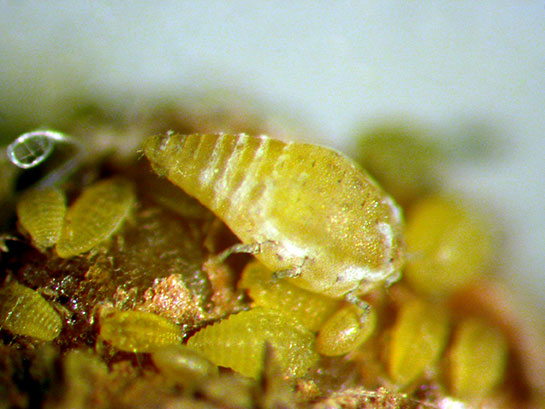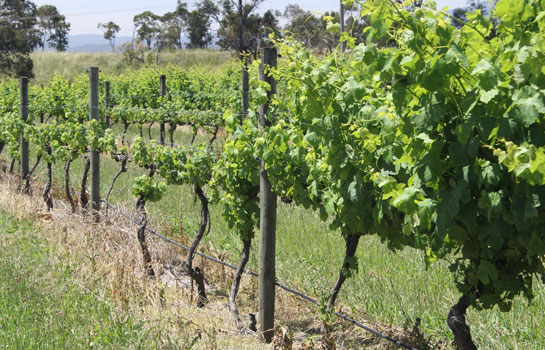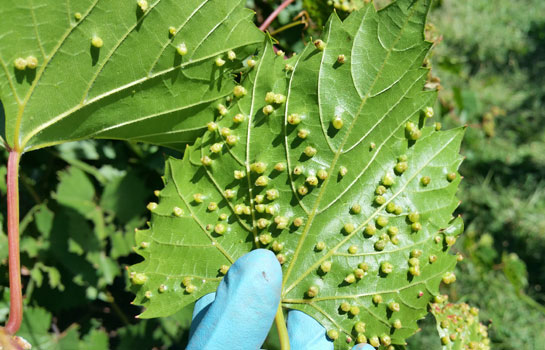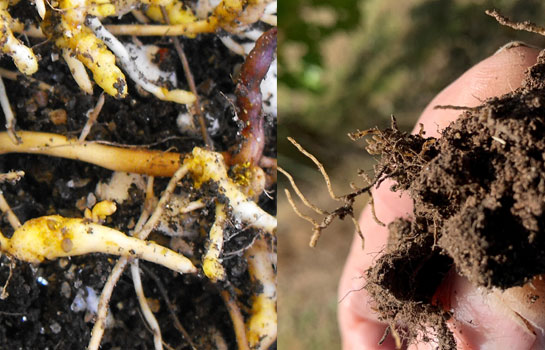Grapevine phylloxera
For more information relating to phylloxera see Victorian Viticulture Biosecurity hub.
Notice
Grapevine phylloxera (Daktulosphaira vitifoliae) is a declared notifiable pest under the Plant Biosecurity Act 2010.
There is a mandatory reporting requirement if a person knows or has reason to suspect phylloxera may be present at a property.
This mandatory requirement applies to person/s who:
- own or occupy the land
- own or possess the material
- deal with the land or material as a consultant or contractor engaged by the owner/occupier or manager
- own or manage a diagnostic laboratory that receives a sample.
If you think you have phylloxera, you must report any suspected detections to Agriculture Victoria within 7 days by:
- emailing market.access@agriculture.vic.gov.au or
- phoning a Biosecurity Officer on 136 186.
A failure to notify is an offence under section 17 of the Act. The maximum penalty amount for sentencing by the Court is:
In the case of a notifiable pest or disease, 120 penalty units;
About phylloxera
Phylloxera (Daktulosphaira vitifoliae) is a significant threat to grapevines in Australia and the insect can survive and develop on all Vitis species, including ornamental grapevines. Phylloxera is a small, yellow, aphid-like insect that feeds on the roots, and sometimes the leaves, of grapevines. Adult phylloxera are 0.8 – 1.5 mm long and cream-yellow in colour.

In Victoria, phylloxera is known to exist in six control areas called Phylloxera Infested Zones (PIZ). The purpose of the control areas is to prevent the spread of the pest from the control area, throughout the state.
Read about Compliance and Movement Conditions for more information on phylloxera zones in Victoria and legal requirements that apply.
Requirements for permits, certification and treatments apply to many movements on regulated phylloxera host materials, including equipment, bins, planting material and grapes.
Phylloxera causes a progressive decline in vine vigour that spreads from the initial infestation site throughout the vineyard. Symptoms may appear within three years, with vine death possible within five to six years, depending on the phylloxera genotype and the vine cultivar. Grapevines grown on their own roots, Vitis vinifera, are most susceptible to phylloxera damage, as compared to grafted vines (rootstocks) that are known to have resistance or tolerance to phylloxera.
The insects feed by sucking fluids from the plant, causing galls to form on roots. The insects generally live and feed on the surface of root galls. By damaging the roots, the vines show symptoms of general decline, which include leaves transitioning from rich green, to pale green, to yellow as symptoms worsen. Secondary disease infections often occur in the damaged roots. In the early stages of an infestation leaf yellowing will normally be seen in two to three neighbouring vines.
Phylloxera can also feed on leaves, causing galls on the leaf, although this is less common in Australia. Leaf galling strains of phylloxera are known to occur in the North East Phylloxera Infested Zone. Plant shoots are smaller, with a smaller canopy and with less length between leaves (internode distance).
Many canopy symptoms of vines infested with phylloxera can look like other concerns such as plant nutrition imbalances or deficiencies, changes in soil type, soil acidity, or soil moisture levels. However, when vines appear weak but there is strong weed or grass growth at the base of the vines, it may be more likely to be phylloxera. General canopy symptoms can provide information on where to complete root inspections to look for root symptoms or the presence of phylloxera insects and eggs.
- Initial damage in vineyards typically starts in a small, localized area where phylloxera first invades, gradually spreading outward and enlarging the zone of infected vines.
- Feeding damage on older lignified storage roots (tuberosities) leads to the formation of brown swellings, while young, non-lignified feeder roots and root hairs develop yellow, fleshy galls known as nodosities.
- Infested vines exhibit a gradual decline in vigor, turning yellow, becoming stunted, and failing to produce new shoots. As the infestation progresses, the vines weaken and eventually die.
If you suspect phylloxera is present, you must notify Agriculture Victoria within 7 days by:
- emailing market.access@agriculture.vic.gov.au or
- phoning a Biosecurity Officer on 136 186
General vineyard canopy symptoms of phylloxera

- Vines that are inconsistent in shape, size and colour compared to neighbouring vines, especially if there is strong weed growth and poor growth.
- Sections of vines, either rows or patches, that are not consistent in solid green colouring compared to the rest of vines in the vineyard. They may be yellow or pale lime green colour or have different colours on the outside of the leaves to the inside of the leaves.
- Dips down the length of the rows, where the canopy is shorter in height than the surrounding vines, but it is not caused by undulating ground.
- Plant shoots are smaller, with smaller canopy and with less length between leaves (internode distance).
- Some strains of phylloxera will present as leaf galls.

Specific underground signs of phylloxera to look for in a vineyard include:
- Root feeding by phylloxera induces hook-shaped galls (also called nodosities) on non-lignified young feeder roots, and tuberosities (wart like lesions or scars) on old, lignified storage roots.
- The damage on roots can allow entry of other pathogenic microorganisms, causing secondary infections by moulds, fungi, bacteria, some insects and mites.

Phylloxera populations peaks between December and March.
During the phylloxera lifecycle, it moves below and above the ground. Eggs are laid on grapevine roots which hatch to “crawlers” as the soil temperature increases in spring. Cool weather will delay the emergence of crawlers.
If the crawler population on roots is too competitive, crawlers move above the soil into the canopy of the vines and spread out to find new feeding sites. There are overlapping generations of phylloxera during the growing season with populations at peak in late summer.
Adults can lay up to 200 eggs per cycle and are capable of several breeding cycles per season, depending on the virulence of the phylloxera strain, nutrient availability and environmental conditions.
Movement of phylloxera is most often attributed to crawlers. These are easily picked up on clothing, footwear, equipment and vehicles, in soil and on vine material, where they can be spread to other vineyards and regions. Crawlers can also naturally spread from vine to vine by crawling along the soil surface, in the canopy, or along the root below the soil surface. Phylloxera can survive for up to 29 days without a food source.
Just one phylloxera insect is enough to infest an entire vineyard. A single insect can lay up to 200 eggs and complete several generations in a season depending on the temperature, vine susceptibility and soil conditions.
To safeguard your vineyard from phylloxera, it is essential to comply with state quarantine regulations concerning the movement of materials. For detailed information on requirements in phylloxera zones, see Compliance and movement conditions.
Requirements for permits, certification and treatments apply to many movements on regulated phylloxera host materials, including equipment, bins, planting material and grapes.
There are currently no known treatments for phylloxera. The current industry practice to manage phylloxera is by replanting a vineyard onto resistant or tolerant rootstocks. Additionally, practicing strong biosecurity measures is crucial. Ensure that all vehicles, equipment, and footwear are thoroughly cleaned and disinfected before entering the vineyard to minimize the risk of phylloxera contamination. Find out more about managing farm-gate biosecurity and best practice viticulture biosecurity.
Reporting an unusual plant insect pest or disease
Report any unusual plant pest or disease immediately using our online reporting form or by calling the Exotic Plant Pest Hotline on 1800 084 881. Early reporting increases the chance of effective control and eradication.
Please take multiple good quality photos of the pests or damage to include in your report where possible, as this is essential for rapid pest and disease diagnosis and response.
Your report will be responded to by an experienced staff member, who may seek more information about the detection and explain next steps.
Report onlineFurther information
- Find more information about phylloxera at the Victorian Viticulture Biosecurity hub
- For movements of phylloxera hosts are regulated by the Victorian Government read the Compliance and Movement Conditions page
- How industry can manage farm-gate biosecurity and best practice viticulture biosecurity page
- Other grapevine diseases